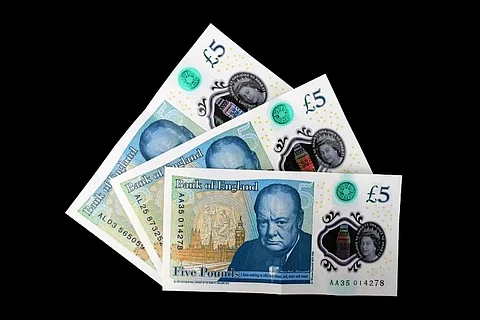

On first reading about the protests because the new plastic British five-pound note contains animal fat – and the mass petition to have it withdrawn – I immediately thought of the protests in 1857 that led up to the Indian Mutiny rebellion. “You’d have thought we’d have learned the lesson since then,” I said to myself.
Of course, the introduction – for use by the British army and its Indian troops – of a new cartridge for the 1853 Enfield rifle which had allegedly been greased in pig and cow fat, was not the key trigger for the British Empire’s biggest revolt. Its power lay more in its force as a rumour than it leading to actual cases of Hindus or Muslims being directly polluted via contact with animal products.
But this is in some ways beside the point – as is the case with the petition started by Doug Maw, a hotel worker from Cumbria. The 120,000-odd petitioners – including vegetarian and vegan cafés across the UK and a range of religious groups – are probably aware of the fact that plastic bags, crayons, cosmetics, soaps and detergents, latex, toothpaste, and candles contain animal fats, too. But the tangibility and exchangeability of a banknote – its symbolic and material power – brings a greater social significance to the contaminated fiver.
Cartridges and chapatis
Like the greased cartridge affair of 1857, then, these symbolic campaigns suggest that the state’s relationship with consumer groups is fragile and the nature of political communication is ebullient. Key aspects of the £5 protest are its forms of rapid transmission. In 2016, social media allowed Maw’s greased fiver petition to quickly gather momentum. Similarly, the mysterious appearance of thousands of chapatis being passed from hand to hand among sepoy soldiers across northern India in February and March 1857, led British officials to surmise that the spread of this odd secret message, which outpaced the mail service, might be the harbinger of something serious.

The Sikander Bagh in Lucknow was the venue for a fierce battle during the Indian Mutiny.
The chapati wave had no proven link to the rebellion of May 1857 – despite official beliefs to the contrary. Nevertheless, government disconnection and security paranoia – as well as the enormous possibilities of mass communication via objects – characterise these moments of symbolic token distribution at both times.
So it is worth pausing to consider the historical signs running through these bendy notes, both religious and secular. In calling people to join the fiver ban, the National Council for Hindu Temples in the UK made explicit reference to 1857, and the use of pig and cow grease in its statement of 1 December 2016.
The ensuing revolution has been called the First Indian Revolution … and helped to focus such a sense of national identity that many remark that it created the wave of anti British rhetoric which coalesced in the expulsion of the colonialists and ultimately the demise of the British Empire. Could an adharmic £5.00 be an equally expensive mistake? Time will tell.
Claiming that the “devout Brahmin” Mangal Pandey’s discovery of the contamination sparked the ultimate “demise of the British Empire” is hyperbole, but Hindu organisations in particular draw on a deeper history of anti-colonial protest rooted in animal product taboos. From the 1880s through to the 1930s, for example, protests against the slaughter of cows and the use of cow products in manufactured goods served as a mobilising (albeit religiously divisive) symbol across north India.
Ever since its election in 2014, the BJP and its associated organisations have also maintained a multi-faceted campaign to end cow slaughter in India, specifically targeting Muslim and low-caste traders in hides and meat.
Moral dilemma
In other ways, though, these reactions are predominantly secular and illustrate how minority groups perceive or articulate their political rights. Hindu, Sikh and Jain temples have pointed to the importance of “charitable donations” to their sustenance and the moral dilemma posed by the £5 note. Likewise, cafes in the UK banning the note have pointed out that they make a living by not having animal products anywhere near their establishments.
The twitter storm around the dirty fiver made references to the “rights” of vegans, vegetarians and religious communities, whose ire was raised against Professor David Solomon, inventor of the note for Innovia, for describing protesters as “stupid”.
But we might also consider here the significant moral purchase of vegetarianism in relative terms. There have been no protests yet against the inclusion of Winston Churchill’s image on the note – a diehard opponent of Indian independence and a man widely believed in India to have been responsible for the deaths of more than 3m during the Bengal Famine of 1943.
It may be that the UK Treasury will bite the bullet and consider new forms of manufacture before it releases the planned polymer £10 note featuring the image of Jane Austen in 2017. And in that year of the 70th anniversary of India’s independence, we might also consider anew – like Austen’s Colonel Brandon with his East India fortune, or the Austens’ friendship with Warren Hastings – the many difficult and ambivalent relationships between Britain and India.

William Gould, Professor of Indian History, University of Leeds
This article was originally published on The Conversation. Read the original article.
Note: These are the personal views of the author.